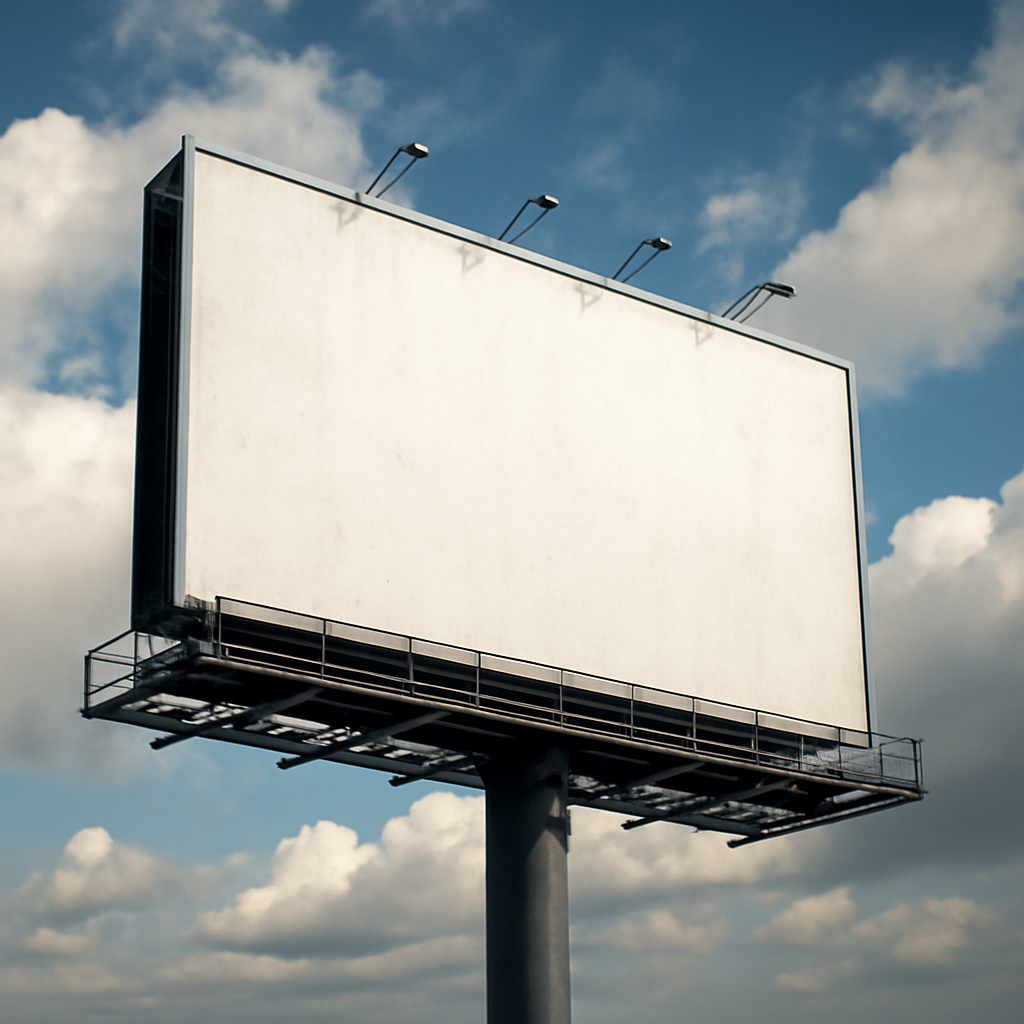Key Takeaways
- Signboards often mark administrative borders and serve as official indicators of boundary lines between territories or countries.
- Billboards, within the context of boundaries, are large markers used to visibly demarcate or emphasize borders in border regions.
- The physical placement and material of signboards tend to be standardized, whereas billboards might be more prominent and designed for visibility from afar.
- Both serve geopolitical purposes but differ in scale, purpose, and visibility, with signboards being more formal and billboards more conspicuous.
- Understanding these differences helps clarify debates around border management, sovereignty, and regional identity.
What is Signboard?

A signboard in the context of geopolitical boundaries refers to an official structure or marker installed along or near country, state, or regional borders to denote the extent or name of a territory. These markers are often made of materials like metal, concrete, or wood, and they carry inscriptions indicating the boundary line, jurisdiction, or country name. Signboards are placed by government authorities and serve as formal indicators of territorial limits.
Official Boundary Markers
Signboards act as the primary physical evidence of boundary demarcation authorized by government agencies. They are often installed at points where borders are less natural, such as between two countries or administrative regions. These markers help prevent disputes by providing a clear, visible indication of where one jurisdiction ends and another begins. In some cases, signboards include additional information like border crossing regulations or diplomatic symbols.
In many nations, signboards are placed at border crossings and along roads leading into different territories to inform travelers of jurisdictional boundaries. Although incomplete. They are often standardized in design to ensure consistency and easy recognition. For example, the “Welcome to Country X” signboard is an official notice that marks the beginning of that territory for travelers and officials alike. Such markers support border management and law enforcement efforts.
Signboards are also used for territorial sovereignty assertions, especially in disputed regions. By prominently displaying boundary markers, states can reinforce claims of sovereignty. These markers sometimes include symbols, national emblems, or languages that assert national identity and control. Their strategic placement can serve as a physical assertion of authority in contested areas.
In addition to their legal and administrative functions, signboards can also serve cultural or historical purposes. In some cases, they commemorate historic borders or signify cultural regions. For example, border markers in Europe often include inscriptions reflecting the history of territorial changes over centuries. These signs become part of the regional identity and collective memory of the people living near them.
Design and Material
The design of signboards tends to be utilitarian, emphasizing clarity and durability. They are constructed from weather-resistant materials like metal, plastic, or concrete to withstand environmental conditions. The size of signboards varies but generally remains manageable for installation and maintenance by border agencies. Colors and fonts are standardized to ensure visibility and uniformity across regions.
Materials used are selected based on climate and geographic conditions; for example, coastal borders might use corrosion-resistant metals, while inland borders might use painted wood or stone. Although incomplete. Signboards often feature reflective surfaces to enhance visibility during nighttime or low-light conditions. The inscriptions are typically in multiple languages, especially in regions with diverse populations or international borders.
Some signboards include additional elements like flags, emblems, or QR codes for digital verification. The latter helps border authorities in verifying the authenticity of the sign and the boundary it marks. Modern boundary markers are sometimes equipped with sensors or GPS devices to monitor their condition and location, ensuring they remain effective over time.
Placement considerations are critical: signboards must be visible from a distance, unobstructed by vegetation or structures, and located at strategic points like border crossings or junctions. Maintenance involves regular inspections to repair damages, repaint, or replace outdated signs. The design thus balances practicality, durability, and official recognition requirements.
Legal and Political Significance
Signboards serve as tangible proof of territorial sovereignty, often used in diplomatic negotiations or disputes. The presence or absence of boundary markers can influence negotiations or international lawsuits over border claims. When borders is disputed, the placement of signboards becomes a symbol of control and recognition by involved nations.
In some conflict zones, signboards have been removed or destroyed as acts of territorial assertion or protest. Their removal can signal a challenge to the existing boundary or a change in control. Conversely, installing new signboards in disputed areas can be a means to reinforce sovereignty claims, especially after territorial changes or treaties.
Legal treaties often specify the exact placement and design of boundary markers, making signboards an integral part of international boundary agreements. They are also used during border demarcation processes, marking the finalization of boundary treaties and clarifying jurisdictional limits for all parties involved. Signboards thus function as both symbols and legal instruments of sovereignty.
In some regions, signboards include inscriptions in multiple languages, reflecting the multicultural or disputed nature of the boundary. This multilingual aspect can sometimes complicate legal interpretations, especially if one side perceives the inscriptions as affirming sovereignty. Nonetheless, signboards remain critical in the formal recognition of borders by the state and its citizens.
What is Billboard?

Within the context of borders, a billboard often refers to a large, conspicuous structure or marker placed in border regions to demarcate or emphasize boundary lines. Unlike official signboards, billboards are typically designed for high visibility and impact, sometimes used in border areas to make a statement or attract attention. These markers can be temporary or permanent and are often used for political or propaganda purposes.
Visual Impact and Prominence
Billboards in border regions are characterized by their large size and eye-catching design meant to be seen from afar. They are usually installed in prominent locations such as border crossings, mountain passes, or along major roads approaching borders. Their primary goal is to communicate a message clearly and with maximum visibility, often to travelers or passersby.
The design of border billboards often includes bold colors, large fonts, and symbols representing national identity. For example, a billboard might display a national flag alongside a slogan or a map emphasizing territorial claims. Such visual elements serve to reinforce sovereignty and territorial boundaries to a wide audience.
In some cases, billboards are used for political messaging, including nationalist slogans or warnings to outsiders. They may also serve as propaganda tools, especially in contested areas, aiming to influence perceptions of sovereignty or territorial presence, Their placement and message are often carefully planned to maximize psychological impact.
The materials used for these billboards are chosen for durability, with weather-resistant surfaces, large metal frames, and high-quality printing. In border zones with harsh climates, billboards might be designed to withstand wind, snow, or intense sunlight, The size and prominence make them a focal point for regional political narratives and territorial assertion.
Symbolism and Political Messaging
Billboards often carry strong symbolic messages that assert territorial claims or national pride. For example, a billboard might feature images of historic figures, national symbols, or slogans that evoke patriotism. These messages are designed to reinforce the legitimacy of a border or to deter encroachments.
In disputed regions, billboards can serve as a form of territorial assertion, sometimes accompanied by military or police presence to back up the message. These structures might be erected after territorial disputes or during conflicts to visually demonstrate control or presence.
Some border billboards include warnings or advisories for travelers, such as “Entering XYZ Territory” or “Border Zone – No Trespassing,” emphasizing the boundary’s importance. These messages are often intended to discourage illegal crossings or to alert travelers to national jurisdiction. Their prominent placement ensures high visibility and immediate recognition.
In addition to political messages, border billboards can serve cultural or historical commemorations, marking significant events or regions. For example, they might celebrate a region’s independence or historical border delineation, thus reinforcing regional identity and sovereignty claims.
Design and Construction
Designing border billboards involves balancing aesthetics with the need for durability and clarity. They are constructed from materials like steel, aluminum, or weatherproof plastics to withstand environmental challenges. Although incomplete. High-resolution printing techniques are used to ensure the messages remain clear over time.
The size of these billboards varies but often exceeds traditional advertising billboards, sometimes reaching several meters in height and width. The choice of colors and fonts is strategic, meant to attract attention and convey messages quickly. Often, they include national symbols, emblems, or slogans that evoke emotional responses from viewers.
Placement is strategic, often at high-traffic border crossings or vantage points where they are likely to be seen by many. Maintenance involves regular cleaning and repairs to prevent fading or damage, ensuring that the messages remain impactful. In some cases, lighting or digital screens are added to increase visibility during nighttime or low-light conditions.
In contentious border zones, the design and placement of billboards are carefully coordinated with security agencies to avoid misunderstandings or escalations. Although incomplete. Their construction is sometimes accompanied by political statements or demonstrations, making them a powerful tool in regional geopolitics.
Comparison Table
| Parameter of Comparison | Signboard | Billboard |
|---|---|---|
| Purpose | Official boundary indication | Visibility and political messaging |
| Design | Standardized, functional | Large, eye-catching, often artistic |
| Material | Metal, wood, concrete | Metal frames, weatherproof plastics |
| Placement | Border crossings, natural boundary points | High visibility zones near borders or borders crossing points |
| Visibility | Moderate, for travelers and officials | High, for both travelers and media |
| Legal significance | Official recognition of boundary | Symbolic or political message, not always legal |
| Durability | Designed for long-term use | Can be temporary or permanent, varies |
| Content | Border name, jurisdiction details | Slogans, symbols, national pride messages |
| Size | Small to medium | Large, sometimes massive |
| Functionality | Legal boundary demarcation | Political, propaganda, or psychological impact |
Key Differences
Official vs. promotional — Signboards are formal markers installed by authorities to indicate boundary lines, whereas billboards are often used for political or propaganda messages in border regions.
Design complexity — Signboards tend to have standardized, utilitarian designs focused on clarity, while billboards are designed to be visually striking to attract attention.
Placement purpose — Signboards are placed at official border crossing points for legal recognition, while billboards are located in prominent zones to influence perceptions or send messages.
Material and durability — Signboards use durable, weather-resistant materials meant for longevity; billboards may vary in permanence and are often more weather-dependent.
Legal implications — Signboards have a recognized legal status as boundary markers, whereas billboards serve more as symbolic or psychological tools with less official recognition.
Content scope — Signboards display official boundary information, while billboards may carry slogans, flags, or political symbols.
Visibility range — Signboards are visible to travelers and officials at close range, whereas billboards aim for maximum visibility from afar, often in high-traffic areas.
FAQs
Can signboards be removed or altered without permission?
Generally, signboards installed by government authorities are protected by law, and removing or altering them without permission can lead to legal consequences or diplomatic issues, especially if they are official boundary markers.
Are billboards in border areas used for security purposes?
While primarily intended for messaging and visibility, some border billboards also function as part of security strategies, deterring illegal crossings or signaling active control zones through their placement and messaging.
How do signboards reflect cultural or historical aspects of a border region?
Signboards sometimes include inscriptions, symbols, or designs that reflect the history, cultural identity, or language of the region, serving as a reminder of historical sovereignty or regional traditions.
Are there international standards for designing boundary signboards?
There are no strict international standards; however, many countries follow common practices like visibility, durability, and multilingual inscriptions to ensure clarity and recognition, especially in border zones with diverse populations.
